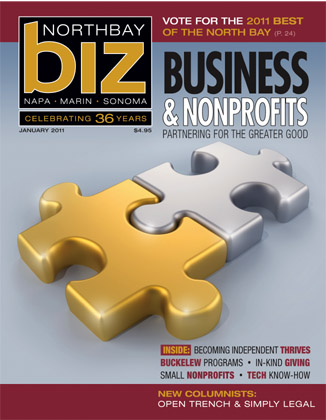|
|
(c) Copyright Patricia Dines, 2011. All rights reserved. |
"With the economy the way it is, nonprofit leaders have other things on their minds right now, like keeping the doors open, paying their staff, and providing their services. But to the degree that nonprofit leaders look at some of these [technical tools], they'll be better off in the long run. You just have to pick and choose what's best for your organization."
-- Linda Davis, Center for Volunteer and Nonprofit Leadership of Marin
"I think there's a real need to move away from solutions that are ad hoc and cobbled together
and towards things that really help nonprofits run more efficiently and make better use of their time."
-- Terence Mulligan, Napa Valley Community Foundation
Patricia Dines is the author of a wide variety of helpful books, newsletters, and articles that inspire and empower constructive action on community issues. For more information, see <www.patriciadines.info>.
